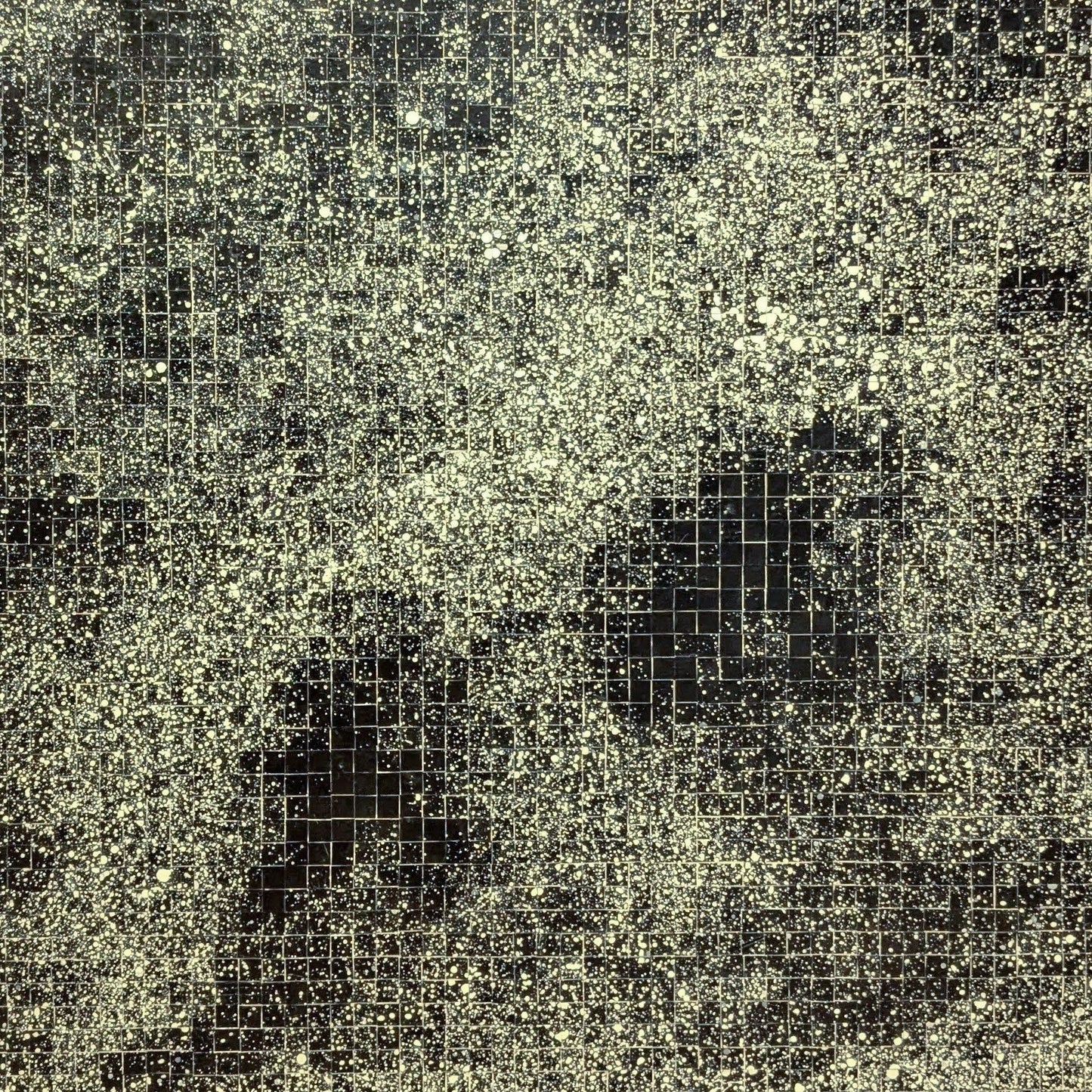
I met Lauren at 6pm for The Museum of Modern Art’s Friday night special. They had a bar open, music playing, and best of all - free admission for NYC residents. (Not that I could take advantage of that, since I live in New Jersey.) Still, there’s something fun about seeing art after hours. We were there to check out the Jack Whitten exhibit. I’d never heard of him before, but after seeing this show, I won’t forget him. It was a full retrospective: six decades of work, starting in the 1960s, and it completely blew me away.
He went through many technical phases, but all of his work felt deeply intentional, like he was constantly reinventing his tools and materials without losing his sense of purpose. The early paintings had an expressive, gestural energy, often tied to the political turbulence of the ’60s and his experience as a Black man in America. As the decades progressed, his techniques became increasingly experimental. He used rakes, squeegees, even custom-built tools to manipulate paint in new ways. Some works looked like mosaics; others resembled digital glitches rendered in pigment.
One of my favorite discoveries was that he did a residency at Xerox in the ’90s and made a series of works using toner. Toner! It was wild to see how he incorporated this commercial, powdery material into abstract compositions.
The whole exhibit was fantastic. It’s rare to see such a full arc of an artist’s career in one place, from the ’60s through the 2010s, and even rarer to see someone stay that curious, that inventive for six straight decades. I went in not knowing what to expect, but I left in awe of how far he pushed himself as an artist and painting as a medium.
I took so many photos, but I highly recommend checking it out for yourself. It's on view at the Museum of Modern Art in New York through August 2, 2025.
"Whitten was haunted by his past, by histories of racial violence and the turmoil of the present."

Birmingham 1964
"Birmingham 1964 is a wound .... Every time I've experienced physical violence, I've had a visual response."


View from Aghia Galini
Whitten first visited Greece in 1969, the homeland of his wife’s family, and found deep inspiration in its landscape and history.




A tool he made to drag paint across canvas.








He pushed acrylic paint through a grate with holes to produce this pixelated look.

These are tiles made of hardened acrylic paint.



I can't believe I didn't take any photos of the toner paintings, but I found these two on the internet to give you an idea of what they look like.

Photo via www.hauserwirth.com


Photos: Swain McCaughrin, except where noted.
.
References
Wall text for Jack Whitten: The Messenger. The Museum of Modern Art, New York City, 2025.
